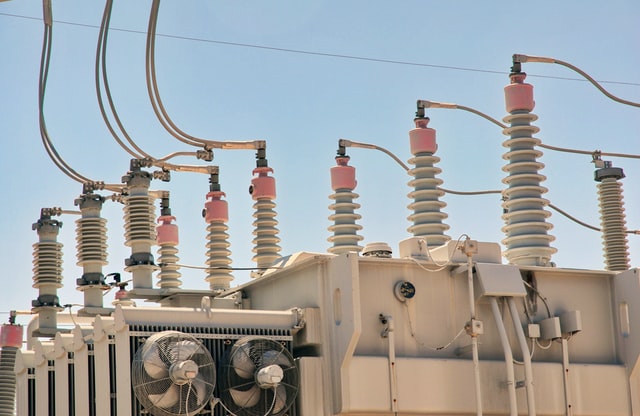Have you ever wondered what is the function of silica gel in a transformer? If you have, then do you know why? This article will cover its function.
How a Silica Gel Functions and Transformer Breathing
Silica gel breathers are put in the conservators of gas transformers by the majority of power-producing firms. These silica gel breathers are built to withstand moisture from the air.
Some things to keep in mind about what is the function of silica gel in a transformer:
- Power transformers require a method to account for changes in the volume of the insulating oil as it heats and cools. As the transformer “breathes” from the expansion and contraction of the insulating oil, the silica gel dries (removes moisture) from the atmospheric air.
- Moisture inside a transformer degrades the mineral oil’s insulating properties as well as the cellulose insulation of the windings. Silica gel crystals and beads have a high capacity for drying air.They achieve this by eliminating moisture.
- Dust and other airborne particles are efficiently held by the oil in the oil seal cup. It acts as a barrier between the air and the silica gel. Blue signaling silica gel, comprises a chemical component called cobalt chloride that gives it its blue hue. It is typically used in breather transformers.
People, Who Read This Article Also Read: Why Neutral of the Transformer is Earthed?
What is Transformer Breathing?
When the oil cools, the transformer sucks air from the surrounding environment into it. This is referred to as a transformer breathing in. As a result, the air is forced to travel through a silica gel breather, which absorbs moisture in the air and assures that only dry air reaches the transformer.
- The temperature of the transformer insulating oil rises, when an electrical power transformer is loaded. As a result, the volume of the oil rises as well.
- The air above the oil level in the conservator will escape as the volume of the oil increases.
- Again, the volume of the oil reduces at low oil temperatures. This causes the volume of the oil to reduce, allowing air to enter the conservator tank.
- Natural air always contains some moisture. This moisture might combine with oil if it gets permission to enter the transformer. Because moisture is extremely damaging to transformer insulation. We should avoid air moisture when entering the transformer.
- The most popular method of removing moisture from air is to use a silica gel breather.
- A breathing pipe links the transformer’s silica gel breather to the conservator tank.
- The transformer’s insulating oil heats up, expands into the conservator tank when the load on the transformer grows.
- Again, the transformer’s insulating oil also gets discharged when the transformer is fully loaded. The conservatory is at the top of the power transformer.
- This helps in pushing dry air out of the conservator tank via the silica gel breather. This is what we know as the transformer breathing out.
- When the oil cools, the transformer sucks air from the surrounding environment into it. This is what we know as transformer breathing in.
What is the Function of Silica Gel in a Transformer?

We also know Silica gel breathers as dehydrating or dehydrator breathers.
During the breathing process, in order to avoid injury, we must evacuate the entering air containing moisture and debris. The silica gel breather absorbs moisture in the air and ensures that only dry air reaches the transformer.
When the silica gel in the breather is put, it is blue. When it absorbs moisture, it turns pink. This indicates that we need to change the crystals. These breathers also have an oil cup, which allows dust particles to settle in the cup.
Silica Gel Breather Construction
In terms of design, the transformer’s silica gel breather is fairly straightforward.
- It is little more than a pot of silica gel through which air travels during the transformer’s respiration.
- Silica gel is an excellent moisture absorbent.
- The newly regenerated gel is extremely effective
- It can dry out air to a dew point of less than -40°C.
- As long as there is a sufficient amount of gel, a silica gel breather will normally work with a dew point of -35°C.
People Who Read This Article Also Read: Transformer Insulation Test | Briefing Tan Delta Test in a nutshell
Complete Concept about the Working Principle of Silica Gel Breather
Silica gel crystal has an incredible ability to absorb moisture. The absorption of moisture in the air takes place by the crystals in the breather when air travels past them. As a result, the air that enters the conservatory is fairly dry.
The dust particles in the air stay in capture by the oil in the oil seal cup. When there is no air movement through the silica gel breather, the oil in the oil sealing cup functions as a barrier between the silica gel crystal and the air.
The hue of silica gel crystal is dark blue while dry, but it becomes pink when wet.
Suppose there is enough difference between the air inside the conservatory and the outside air. Then the oil level in two components of the oil seal changes.
- It changes until the lower oil level just reaches the rim of the upside down cup.
- At that point the air moves from the high-pressure compartment to the low-pressure compartment of the oil seal.
Both of these occur when the oil works as a core filter, removing particles from the surrounding air.
Conclusion
I hope you enjoyed my ultimate guide to your question: what is the function of silica gel in a transformer?
Now I’d like to hear from you: Did you know that silica gel absorbs moisture? Do you think silica gel should be in use for industries?
Either way, let me know by leaving a quick comment below.


